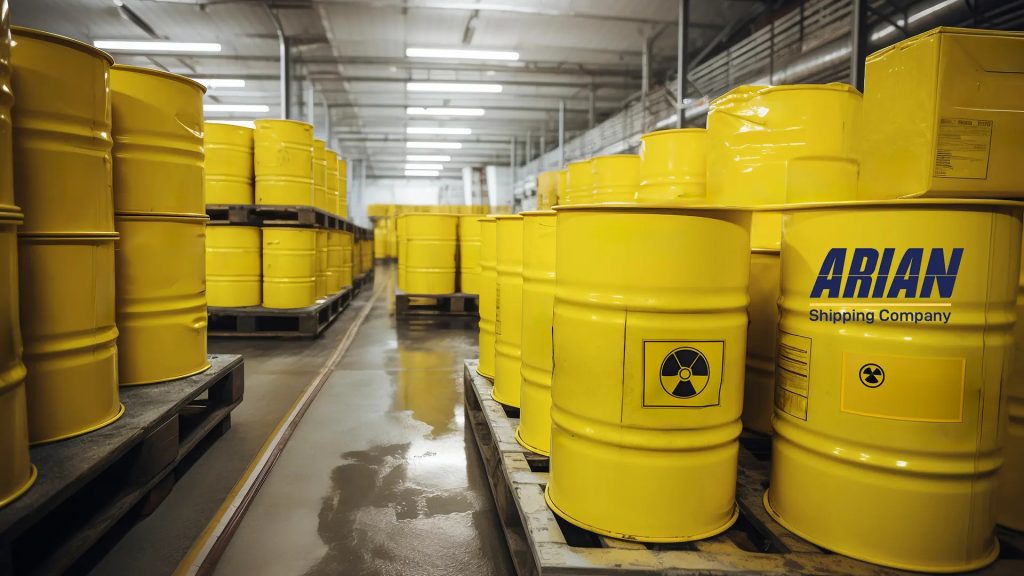
How to transport dangerous goods safely and legally?
The transportation of dangerous goods (DG) is one of the vital processes in various industries including manufacturing, energy, pharmaceuticals, and healthcare. However, the smallest mistake in transporting dangerous materials can have serious consequences: from endangering human lives to environmental damage and heavy fines for non-compliance with regulations. This is where the precise adherence to international regulations comes into play. This guide reviews the principles of safe and legal transportation of dangerous goods based on international regulations. Whether you are dealing with flammable liquids, corrosive materials, or radioactive substances, by implementing these steps you can ensure safety and avoid fines.
What are dangerous goods?
Dangerous goods, Hazardous Materials or Hazmat, are substances that during transportation endanger human health, public safety, property, or the environment. This danger may be due to flammability, toxicity, chemical reactivity, or radioactivity. Examples of dangerous goods:- Flammable liquids such as gasoline and ethanol
- Corrosive materials such as strong acids and bases
- Toxic substances like pesticides or specific laboratory compounds
- Compressed gases such as oxygen and propane cylinders
- Radioactive materials used in medicine and research
International regulations for the transportation of dangerous goods
To create global harmonization in the transportation of dangerous goods, frameworks have been developed by international organizations:UN Model Regulations
The basis of many national and regional laws, developed by the United Nations Committee of Experts on the Transport of Dangerous Goods. Regulations for transport based on mode of transport:- IMDG Code – maritime transport
- IATA DGR – air transport
- ADR – road transport in Europe
- RID – rail transport in Europe
Domestic laws of countries:
Some countries may have stricter regulations than international standards, such as 49 CFR regulations in the United States or TGD regulations in Canada. Six basic steps for the safe transportation of dangerous goodsClassification of dangerous materials:
All dangerous goods must be categorized based on the nine UN classes: Class 1: Explosives Class 2: Gases Class 3: Flammable liquids Class 4: Flammable solids Class 5: Oxidizing substances and organic peroxides Class 6: Toxic and infectious substances Class 7: Radioactive materials Class 8: Corrosive materials Class 9: Miscellaneous dangerous substances Accurate classification is the prerequisite for selecting packaging, labeling, and documents.Packaging based on international standards:
Packaging must have UN certification and consist of three parts: Inner packaging: the direct holder of the substance (bottle, can, etc.) Intermediate packaging: if necessary, to increase safety Outer packaging: the strong external container (metal, plastic, or cardboard) Packages must pass tests such as leakage, drop, and pressure tests and have a UN approval code like 4G/X30/S/22.Proper labeling and marking
Attaching hazard class labels (pictograms) Displaying the UN number such as UN 1203 for gasoline Warning signs such as “This side up” or “Keep away from moisture”Preparation of transport documents:
- Dangerous Goods Declaration (DGD)
- Safety Data Sheet SDS or MSDS according to GHS
- Transport documents Bill of Lading or Airway Bill with shipper and consignee information
- Documents must be complete, accurate, and compliant with the language of the relevant regulations, for example English for IATA.

Selecting the appropriate transport method and company:
- Reviewing the qualifications and licenses of the transport company (IATA, ADR, IMDG)
- Checking the equipment of vehicles with necessary facilities (such as ventilation, fire suppression system, resistant shelving)
- Ensuring the full training of the transport company personnel in the field of dangerous materials
Training and emergency preparedness:
According to regulations, all individuals involved in the transport chain must be trained and have valid certification. The training must include:- Safe handling of dangerous materials
- Emergency actions in case of leakage, explosion, or fire
- Companies must have a crisis management plan and spill response equipment (Spill Kits).
Common mistakes and ways to avoid them:
Incorrect classification: leads to wrong packaging or labeling and ultimately fines or accidents Incomplete or incorrect labels: one of the most common violations during inspections Incomplete or inconsistent documentation: causes delays in clearance or return of goodsWhy compliance with dangerous goods transport regulations is important?
Operational efficiency: preventing delay and reducing accident risk Legal coverage: reducing the risk of fines or suspension of license Customer trust: showing responsibility and brand credibility Environmental protection: reducing potential leaks or pollution
Transporting dangerous goods as a competitive advantage
Strict adherence to international standards in the transport of dangerous materials is not only an obligation but also an opportunity to enhance competitive position. By using digital DG management systems, processes can be automated, transparent, and traceable. Safety in the transportation of dangerous materials is part of the social and professional responsibility of every business. By complying with international regulations, continuous training, and choosing specialized partners, one can experience safe, legal, and efficient transportation. For more resources, refer to the official documents of the United Nations (UN Orange Book), IATA DGR regulations, or educational systems such as DG Training Portal.Are you ready to entrust the transportation of dangerous goods to us with confidence?
At Arian Logistics, by utilizing a specialized team, equipped fleet, and full familiarity with international regulations, we carry out your dangerous goods transportation quickly, safely, and legally. Contact us right now or fill out the free consultation form so that our experts can provide your precise and customized solution.Contact us today.
Ready to move your goods across global markets?
We're here to guide you through every stage — from choosing the best route to handling documents and delivering flawlessly.